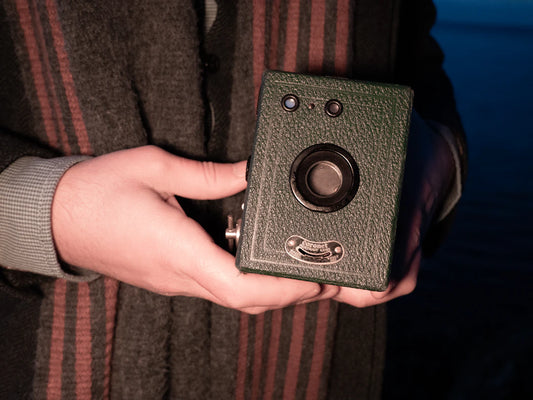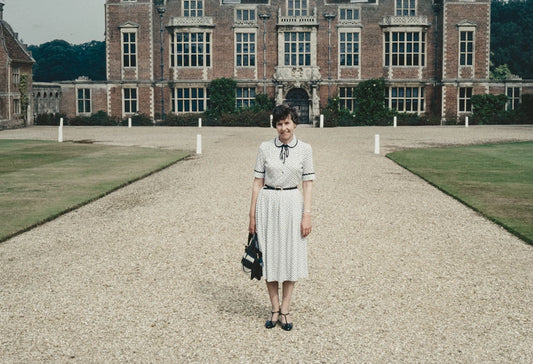In recent years, the fashion industry has undergone a significant transformation with the emergence of sustainable practices. One fascinating subset of this evolution lies within the world of vintage sportswear production. As consumers become more aware of their environmental footprint, they are turning to brands that commit to sustainability. This blog post will dive deep into the sustainable practices involved in vintage sportswear production and illustrate how these methods contribute to a more eco-friendly future.
The Importance of Sustainable Practices
Environmental concerns are at an all-time high, and the fashion industry is a significant contributor to pollution, resource depletion, and waste. By embracing sustainable practices, the vintage sportswear sector plays a pivotal role in mitigating these issues. Some key reasons why sustainable practices are essential include:
- Reducing Waste: Vintage sportswear helps prevent clothing from ending up in landfills by giving garments a second life.
- Conserving Resources: Sustainable production methods ensure that less energy, water, and raw materials are used.
- Supporting Ethical Practices: Many vintage sportswear producers prioritise fair treatment and wages for workers.
The Role of Vintage Sportswear in Fostering Sustainability
Vintage sportswear represents more than just nostalgic fashion. This innovative segment of the industry champions sustainability in various ways:
Embracing Upcycling
One of the most significant elements of sustainable vintage sportswear production is upcycling. This practice involves transforming old garments into new pieces, thereby reducing waste and conserving resources. By consciously selecting vintage pieces, brands are reducing the demand for new fabric production, which is one of the most resource-intensive processes in fashion. Each vintage item repurposed not only brings a unique style but also serves as a statement for environmental conservation.
Utilising Eco-friendly Materials
Many sustainable vintage sportswear producers prioritise the use of eco-friendly materials in their collections. This could mean sourcing organic cotton, recycled polyester, or even natural dyes. By shifting towards these materials, they decrease the reliance on harmful chemicals and non-renewable resources, contributing to a cleaner and greener planet. When shopping for vintage sportswear, look for labels indicating the use of sustainable materials, as this reflects the brand's commitment to the environment.
Promoting Slow Fashion
The term "slow fashion" emphasises quality over quantity and values long-lasting pieces over transient trends. Vintage sportswear embodies this philosophy, as it encourages consumers to invest in timeless garments that serve beyond seasonal trends. By opting for sustainable vintage pieces, customers promote a more durable approach to fashion that shifts the focus away from the fast-paced, throwaway culture prevalent in mainstream fashion.
Challenges in the Sustainable Vintage Sportswear Sector
While the prospects of sustainable vintage sportswear are exciting, challenges persist. Some of the primary hurdles include:
Authenticity vs. Replication
The vintage market often grapples with issues of authenticity. Certain brands may replicate vintage styles without adhering to sustainable practices. Shoppers must do their research to ensure they are supporting genuinely sustainable companies. Educating consumers about the significance of authentic vintage sportswear can foster greater appreciation for sustainable practices in the industry.
Availability of Genuine Vintage Pieces
As demand for vintage sportswear rises, genuine vintage pieces can become difficult to find. The rarity of select items can inflate prices, making it less accessible. However, many sustainable brands are now offering modern reproductions of vintage styles, allowing consumers to experience nostalgia while still endorsing sustainability.
How to Identify Sustainable Vintage Sportswear
When shopping for vintage sportswear, identifying sustainable options can seem daunting. Here are a few tips to help you navigate your choices:
- Research the Brand: Look into the brand’s values, sourcing methods, and commitment to sustainability.
- Check Material Labels: Seek products made from eco-friendly, recycled, or organic materials.
- Ask Questions: Don’t hesitate to ask retailers about their production practices and sustainability efforts.
Collaborative Initiatives in Vintage Fashion
Many vintage sportswear brands are coming together to prioritise sustainability through collaborative initiatives. These partnerships may involve sharing resources, best practices, and even developing new eco-friendly technologies. By working collectively, businesses can optimise their sustainable practices and inspire a culture of accountability within the industry.
Community Engagement and Education
Another essential aspect of these collaborations is community engagement. Many vintage sportswear brands host events, workshops, and online forums to educate consumers on the importance of sustainability. By fostering a sense of community and encouraging open dialogue, these initiatives help people make more informed choices about their clothing.
Fashion Hauls and Vintage Sportswear Events
Shopping sustainably has also become an entertaining experience through fashion hauls and vintage sportswear events. Numerous events now highlight vintage clothing, showcasing how sustainability can also equate to style. Here, consumers can explore collections of vintage sportswear, participate in swaps, or sell their pre-loved pieces directly to fellow eco-conscious shoppers.
Looking Ahead: The Future of Sustainable Vintage Sportswear
As the conversation around sustainable fashion continues to grow, the vintage sportswear market is poised for innovation. With a heightened awareness of environmental impact, brands are motivated to evolve their production processes and ensure their practices remain sustainable. Anticipate developments that focus on circular fashion, where garments not only have multiple life cycles but are also designed with their end-of-life in mind.
Join the Sustainable Revolution
Embracing sustainable practices in vintage sportswear production not only reshapes the fashion industry but also contributes positively to our environment. Whether you are a vintage aficionado or just starting to explore this captivating sector, remember that your choices can make a difference. By prioritising sustainability, you are investing in a future where style and responsibility go hand in hand. It’s time to champion sustainability in vintage sportswear—every choice counts, and together we can create a vibrant, sustainable fashion landscape!





